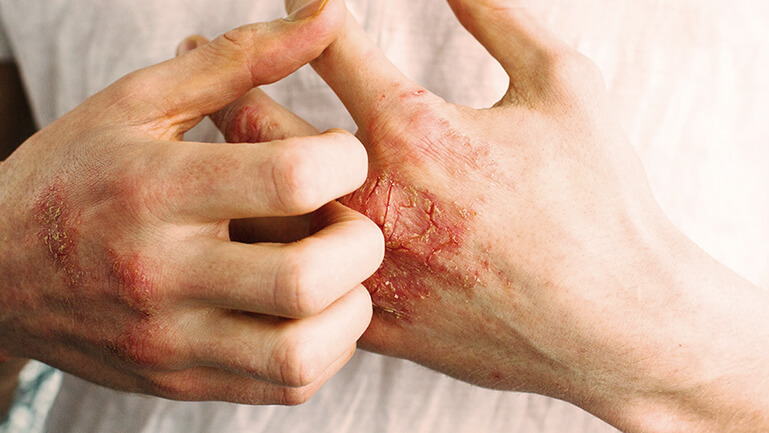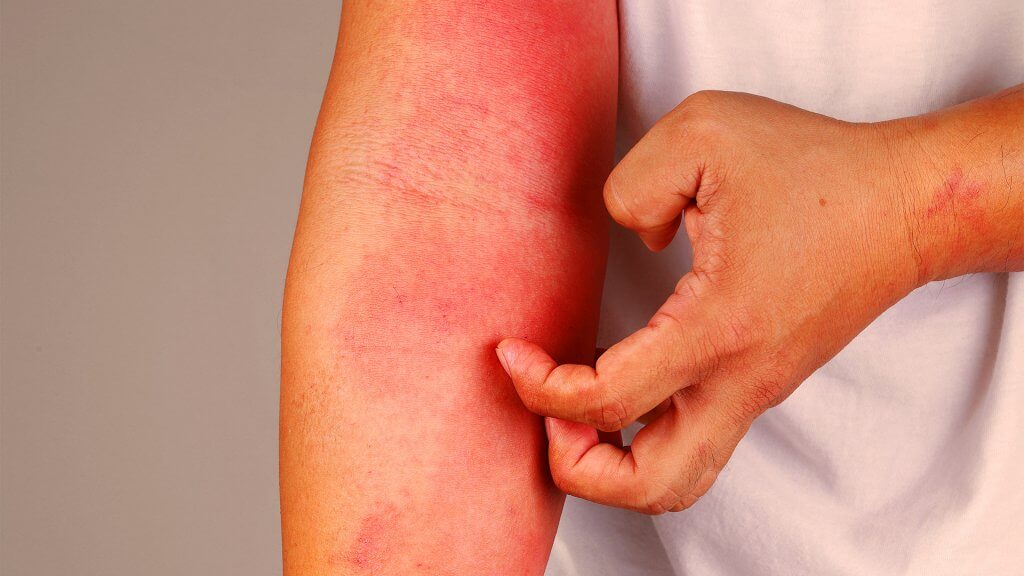Uncategorized
Around 15 percent of children and around five percent of adults suffer from the chronic inflammatory skin disease atopic dermatitis. Despite modern treatment methods, the severe itching and eczema, particularly in the back of the elbow or knee, are a considerable burden for those affected. A team of researchers led by Wolfgang Weninger, Head of the Department of Dermatology at MedUni Vienna, has found a promising approach in a study. Bacteriophages, which occur on the skin as viral components of the microbiome, could advance the development of innovative atopic dermatitis treatments. The results of this research were recently published in the journal “Science Advances”.
To date, the role of bacteriophages (also known as phages) in the human body has mainly been known through studies of the intestinal microbiome. The MedUni Vienna research team has investigated the interaction between phages and bacteria on the skin for the first time in the search for innovative treatment options for atopic dermatitis (AD). It has long been known that atopic dermatitis is associated with significant changes in the skin microbiome. The microbiome refers to the entirety of all microorganisms such as viruses or bacteria that colonize the skin and are of crucial importance for its health. Phages are viruses with different types and functions whose main aim is to infect bacteria in order to either destroy them or stimulate them to multiply.


“In our study, we discovered previously unknown phages in the skin microbiome in skin samples from atopic dermatitis patients, which help certain bacteria to grow faster in various ways,” said first authors Karin Pfisterer and Matthias Wielscher from MedUni Vienna’s Department of Dermatology. This shift in the balance between phages and bacteria was not detected in the comparative samples from healthy individuals and could explain the overpopulation of the skin microbiome with bacteria called Staphylococcus aureus in atopic dermatitis. These findings contribute significantly to a better understanding of the skin bioflora in atopic dermatitis patients and pave the way for the development of new, targeted therapeutic measures. The identification and multiplication of phages that specialize in Staphylococcus aureus and contribute to its destruction is a promising option.
Bacteriophages are not only present in the body, but wherever there are bacteria. It is estimated that there are 1031 different types of phages, which represents an enormous diversity. One of their characteristics is their selectivity in choosing their infection target: most phages have specialized in a certain genus, in many cases even in only one type of bacteria. Although this poses a challenge for scientists to identify the type of phage required for the respective purpose, it also enables their targeted use. Phage therapy has already been shown to be effective in studies on chronic inflammatory bowel diseases. As the viruses make no distinction between antibiotic-resistant and other bacteria, they are also being investigated as a potential miracle weapon in the fight against multi-resistant germs. Further studies should confirm the use of phage therapy, also externally, for neurodermatitis.

Source: Medical University of Vienna
Publication: Science Advances
The phageome in normal and inflamed human skin
M. Wielscher, K. Pfisterer, D. Samardzic, P. Balsini, C. Bangert, K. Jäger, M. Buchberger, B. Selitsch, P. Pjevac, B. Willinger, W. Weninger
science.org/doi/10.1126/sciadv.adg4015